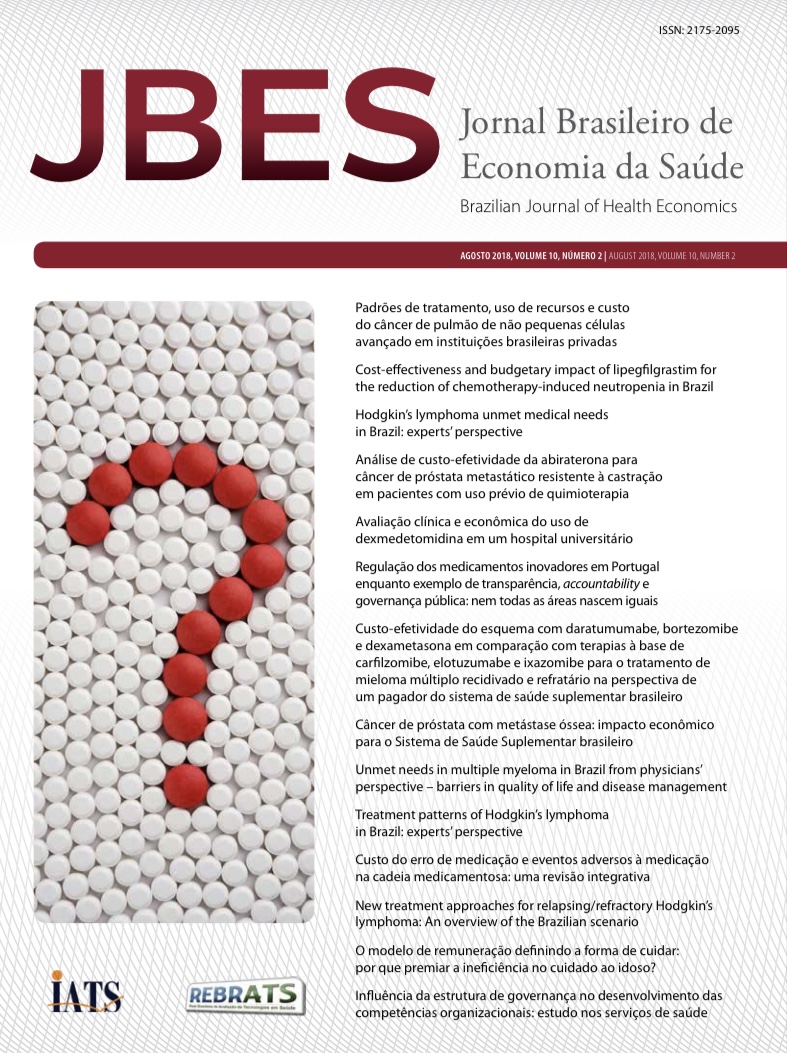Cost-effectiveness and budgetary impact of lipegfilgrastim for the reduction of chemotherapy-induced neutropenia in Brazil
DOI:
https://doi.org/10.21115/JBES.v10.n2.p107-117Keywords:
granulocyte colony-stimulating factor, cost-effectiveness, lipegfilgrastim, filgrastim, neutropeniaAbstract
Background: Granulocyte-colony stimulating factors (G-CSFs) reduce the risk of chemotherapy-induced neutropenia. Lipegfilgrastim is a long-acting, once-per-cycle G-CSF, while Brazil’s standard of care is short-acting filgrastim. A cost-effectiveness and budget impact analysis of lipegfilgrastim was conducted with filgrastim and once-per-cycle pegfilgrastim for adults at risk of neutropenia in Brazil. Methods: The decision model used national and clinical data to evaluate the costs and outcomes of each treatment. Costs included drug and medical expenses, outpatient and inpatient neutropenia treatments, and adverse events. Health outcomes included incidence of neutropenia-related events. For the budget impact analysis, health outcomes and costs for the pre/post-lipegfilgrastim scenarios were combined to identify expenditure with lipegfilgrastim’s introduction. Results: Total cost per patient during a course of four chemotherapy cycles was estimated at R$12,920 for lipegfilgrastim, R$15,168 for filgrastim, and R$13,232 for pegfilgrastim. Based on better outcomes and lower total costs with lipegfilgrastim compared with filgrastim as well as pegfilgrastim, lipegfilgrastim was the dominant treatment strategy over both filgrastim and pegfilgrastim during the duration of chemotherapy treatment. Over 5 years, the uptake of lipegfilgrastim led to savings of R$61,532,403 in overall medical costs. Neutropenic events decreased by 17,141 and deaths linked to febrile neutropenia decreased by 239. Conclusion: Due to better outcomes and lower overall cost, lipegfilgrastim was a cost-saving strategy compared with filgrastim and pegfilgrastim in the Brazilian healthcare system. Furthermore, the budget impact analysis estimated a reduction in overall medical costs and improved health outcomes over 5 years following the introduction of lipegfilgrastim.






